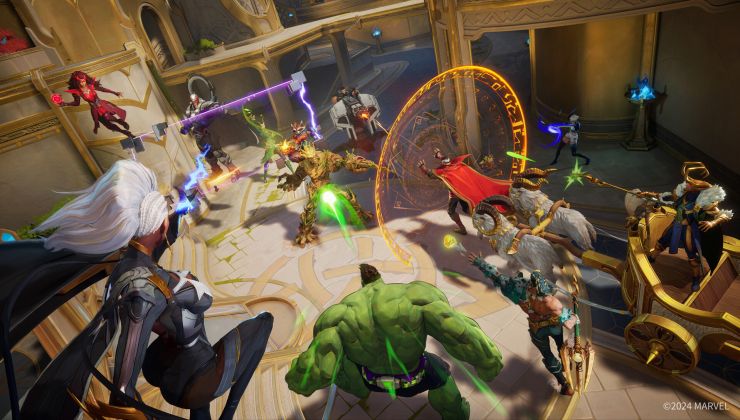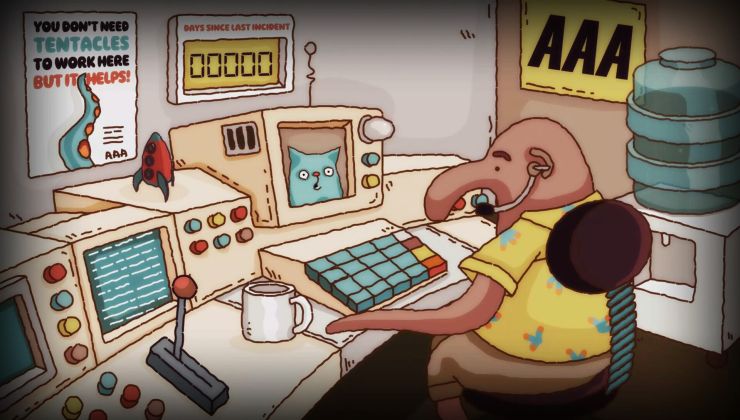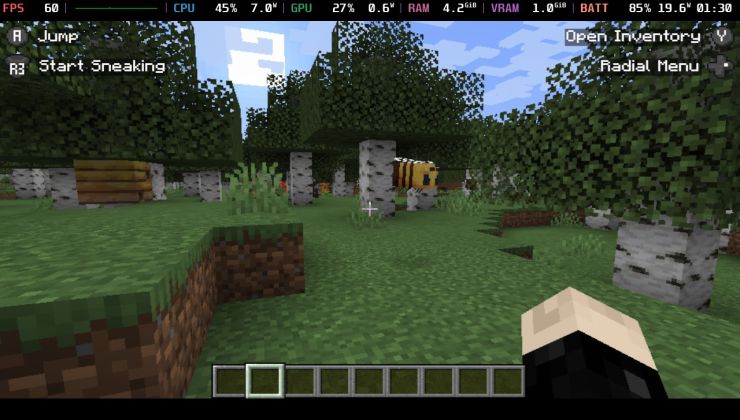Even though I am an Nvidia user, I am really impressed by what has been leaked out about AMD's upcoming Polaris.
I've always said if AMD come out with cards that perform well on Linux I would happily switch and it's looking like Polaris is moving me towards that some more.
WCCFtech have an article about leaked AMD Polaris 10 & 11 information and it really does make AMD's next generation GPU architecture sound awesome.
Although their naming is confusing. Polaris 11 is their lower end and Polaris 10 is their higher end. This is due to Polaris 10 being designed first.
Polaris 10 sounds pretty powerful:
The most impressive thing I've read about Polaris is not just the performance (which sounds great), but the drastically reduced power draw:
According to the article we will see more information on Polaris at the end of this month. Exciting times to be a gamer that's for sure, as graphics cards are becoming so powerful it's crazy.
Obviously it's still all speculative since these leaks may not be entirely true, and in Polaris 10's case it was based on a mobile GPU (which is still massively impressive!).
I am looking forward to seeing real-world tests of Polaris, especially on Linux (I imagine we can count on Phoronix for that). As an Nvidia 980ti user I won't be upgrading for quite a long time, but it's certainly putting AMD firmly on my radar as my next GPU choice if the Linux support is good.
I've always said if AMD come out with cards that perform well on Linux I would happily switch and it's looking like Polaris is moving me towards that some more.
WCCFtech have an article about leaked AMD Polaris 10 & 11 information and it really does make AMD's next generation GPU architecture sound awesome.
Although their naming is confusing. Polaris 11 is their lower end and Polaris 10 is their higher end. This is due to Polaris 10 being designed first.
Polaris 10 sounds pretty powerful:
QuoteAccording to today’s leak the GPU is rated at 5.5 TFLOPS, which is 0.1 TFLOPS shy of the 2816 SP R9 290X. An impressive feat considering the 290X is a ~290W card with 37.5% more GCN stream processors and a memory interface that’s twice as wide. The card is also reportedly rated at less than 150W. According to a previous leak from Benchlife Polaris 10 graphics cards will be rated at around 110W-135W depending on the GPU configuration and clock speeds. Interestingly, according to VCZ this 5.5 TFLOP GPU is not even a desktop class chip but a mobility variant. This would bring R9 390X/390 class performance to notebooks.
The most impressive thing I've read about Polaris is not just the performance (which sounds great), but the drastically reduced power draw:
QuotePolaris 11 on the other hand will feature 14 GCN 4.0 compute units for a total of 896 stream processors. The GPU features a 128bit GDDR5/X memory interface and Polaris 11 cards will feature 4GB of memory. The GPU is rated at 2.5 TFLOPS and a TDP that’s less than 50 watts.
That’s 0.5 TFLOPS north of the 110W R7 370 at less than half the wattage & exactly the same performance of the 180W R9 270X.
According to the article we will see more information on Polaris at the end of this month. Exciting times to be a gamer that's for sure, as graphics cards are becoming so powerful it's crazy.
Obviously it's still all speculative since these leaks may not be entirely true, and in Polaris 10's case it was based on a mobile GPU (which is still massively impressive!).
I am looking forward to seeing real-world tests of Polaris, especially on Linux (I imagine we can count on Phoronix for that). As an Nvidia 980ti user I won't be upgrading for quite a long time, but it's certainly putting AMD firmly on my radar as my next GPU choice if the Linux support is good.
Some you may have missed, popular articles from the last month:
All posts need to follow our rules. For users logged in: please hit the Report Flag icon on any post that breaks the rules or contains illegal / harmful content. Guest readers can email us for any issues.
I've been thinking that I'll be using a Polaris GPU as my passthrough for a Windows gaming VM. Okay driver support in Windows, and support the other (graphics) team? Sure, why not.
Which would require a extra monitor, I would love to do this but extra monitors seem to be too much clutter
0 Likes
Which would require a extra monitor, I would love to do this but extra monitors seem to be too much clutter
Well, I guess you could always switch the HDMI cable between one or the other graphic card depending on which one you are using
(I'm trying to setup a VM with GPU passthrough right now but I'm having troubles with my onboard graphics not working correctly...)
0 Likes
I hope there will be a nice mini PC (Zotac or Brix or so), with a Polaris10 and a AM4 socket Bristol Ridge APU as a launch system. Since the Bristol Ridge APU has nearly the same watt usage as the Zens that will come out later this year, it would be an smooth upgrade as both use DRR4 and AM4.
0 Likes
Promising, but probably not better than what nvidia has to offer
1 Likes, Who?
I wonder of Liam Dawe is sleeping: nVidia 1080 reviews got released (kind of disappointing performance wise) and there's no news over here.
0 Likes
1080 makes most its performance gains in VR, double in fact. Allot of people were expecting double 980Ti performance, yeah no.
Anyway its the card I will get because of 4k and Linux drivers, been riding on my 390x for a long while and I don't see drivers doubling performance any time soon. Allot of NVIDIA users here who switch to the Polaris and expect decent Linux performance are going to be in for some tears... Take it from someone who has experience ;-) (me)
Anyway its the card I will get because of 4k and Linux drivers, been riding on my 390x for a long while and I don't see drivers doubling performance any time soon. Allot of NVIDIA users here who switch to the Polaris and expect decent Linux performance are going to be in for some tears... Take it from someone who has experience ;-) (me)
0 Likes
I've always been an AMD user, just with the PC I have right now I switched to Nvidia+Intel (must have been ~2-3 years back now).
I would love to go back to AMD, to support them, love that they're doing open source stuff now (also, competition) :)
But I am on Linux for just about one year now, so I have no experience with AMD drivers, but telling from the comments here, it sounds like they're not that good... but hey, can't be worse than nouveau, right?
And as my current graphics card gets old, I wanted to switch soon anyway.
Last edited by DasCapschen on 18 May 2016 at 7:16 am UTC
I would love to go back to AMD, to support them, love that they're doing open source stuff now (also, competition) :)
But I am on Linux for just about one year now, so I have no experience with AMD drivers, but telling from the comments here, it sounds like they're not that good... but hey, can't be worse than nouveau, right?
And as my current graphics card gets old, I wanted to switch soon anyway.
Last edited by DasCapschen on 18 May 2016 at 7:16 am UTC
2 Likes, Who?
If Polaris 11 is only to use max 4GB memory and supposed to be power efficient then why would it use GDDR5 instead of HBM?
HBM use less power and is a substantially smaller form factor than GDDR5.
It doesn't make sense unless GDDR5 is much cheaper or if HBM got availability problems.
http://www.amd.com/en-us/innovations/software-technologies/hbm
"Compared to GDDR5, HBM can fit the same amount of memory in 94% less space"
"HBM resets the clock on memory power efficiency, offering >3X the bandwidth per watt of GDDR5"
HBM use less power and is a substantially smaller form factor than GDDR5.
It doesn't make sense unless GDDR5 is much cheaper or if HBM got availability problems.
http://www.amd.com/en-us/innovations/software-technologies/hbm
"Compared to GDDR5, HBM can fit the same amount of memory in 94% less space"
"HBM resets the clock on memory power efficiency, offering >3X the bandwidth per watt of GDDR5"
0 Likes
But I am on Linux for just about one year now, so I have no experience with AMD drivers, but telling from the comments here, it sounds like they're not that good... but hey, can't be worse than nouveau, right?Personally, I switched to AMD years ago because they started to do open source drivers. Having the drivers directly in the kernels is a real blessing and just that is enough for me to take an AMD card again next time. I won't lie, performances aren't as good as with an NVIDIA card with proprietary drivers, but they have improved a lot in just one year and now I can even play Dota on my (very) old HD 6870 (in 2560x1440). And with the catching up of OpenGL versions going to an end, I guess mesa devs will focus on more performance and stability (and Wayland!).
And as my current graphics card gets old, I wanted to switch soon anyway.
Last edited by Creak on 18 May 2016 at 12:46 pm UTC
1 Likes, Who?
I've always been an AMD user, just with the PC I have right now I switched to Nvidia+Intel (must have been ~2-3 years back now).If you want to squeeze every last fps out of your hardware then nvidia with the proprietary driver is the one you should use.
I would love to go back to AMD, to support them, love that they're doing open source stuff now (also, competition) :)
But I am on Linux for just about one year now, so I have no experience with AMD drivers, but telling from the comments here, it sounds like they're not that good... but hey, can't be worse than nouveau, right?
And as my current graphics card gets old, I wanted to switch soon anyway.
If not AMD should do fine.
AMD open drivers is far better then nouveau, i actually think that the difference in drivers functionality is smaller between AMD open drivers like radeon and nvidia proprietary driver then radeon and nouveau.
Nouveau is getting better but it still lacks a lot of functionality.
I use AMD open source driver and for me it works like a charm and i do play a lot of games on staem, and the drivers do get better all the time and in a year i think it will be better then catalyst/amdgpu-pro for users that doesn't use old OpenGL compatibility profiling, and i don't think any normal user ever will need to use OpenGL compatibility profiling.
1 Likes, Who?
the reduced power draw & heat brings top end big rig PC GPU's into the realm of itx/micro-itx Steam Machines and Laptops (many top end laptops already compete in performance but need huge 300w power bricks) . If the tiny Alienware Steammachine can use a 860gtx ( 750ti ) right now, then with good AMD drivers similar systems could probably be made with twice the GPU power and the same power envelope.
Pretty good, running a Polaris 11, with Vulkan inside a small Steam machine giving 60fps 1080p across the board on Linux :)
possibly would even run a lot of simpler 3D games & 2D games at 1440p/4k 30 - 40 fps
Last edited by on 18 May 2016 at 1:33 pm UTC
Pretty good, running a Polaris 11, with Vulkan inside a small Steam machine giving 60fps 1080p across the board on Linux :)
possibly would even run a lot of simpler 3D games & 2D games at 1440p/4k 30 - 40 fps
Last edited by on 18 May 2016 at 1:33 pm UTC
0 Likes
I am really hoping that Zen will support LibreBoot and Polaris will have good drivers, I am planning to switch my Intel/nVidia build for a fully AMD-made build the moment that happens.
I don't know what's the whole fuss about nvidia's drivers being "good", maybe they are better than AMD's current drivers, I honestly don't know, but nvidia's drivers also give me the headaches every now and then, and Intel is super tricky with LibreBoot :(
Man, in an ideal world I could just install the free drivers and be off with it, but sadly performance isn't great from what I heard :/
I don't know what's the whole fuss about nvidia's drivers being "good", maybe they are better than AMD's current drivers, I honestly don't know, but nvidia's drivers also give me the headaches every now and then, and Intel is super tricky with LibreBoot :(
Man, in an ideal world I could just install the free drivers and be off with it, but sadly performance isn't great from what I heard :/
0 Likes
If Polaris 11 is only to use max 4GB memory and supposed to be power efficient then why would it use GDDR5 instead of HBM?
HBM use less power and is a substantially smaller form factor than GDDR5.
It doesn't make sense unless GDDR5 is much cheaper or if HBM got availability problems.
http://www.amd.com/en-us/innovations/software-technologies/hbm
"Compared to GDDR5, HBM can fit the same amount of memory in 94% less space"
"HBM resets the clock on memory power efficiency, offering >3X the bandwidth per watt of GDDR5"
This have various reasons:
-HBM is much expensive than GDDR5*
-HBM limit seriously OC** because memory and gpu stay in same die
*This is very important factor if polaris can shows products is range between 150us and 300us (amd for now dont shows products above 400us)
**This is once reason because nvidia have good OC (for air) margin compared with amd
^_^
Last edited by mrdeathjr on 18 May 2016 at 2:17 pm UTC
0 Likes
Promising, but probably not better than what nvidia has to offer
Well that depends ENTIRELY on what criteria are you using.
If you just want the best performance, I agree 100% with you.
But if you are like me and you want to see the GPU's price/performance, then no.
All the hype aside 1080 looks like 15-30% faster than maxwell.
Now look at the latest 1080 benchmarks against AMD cards... some games 1080 are TIED with a 390 and in another 1080 has about 10% more FPS. (see around 3:30 min when the DX12 game comparison starts)
View video on youtube.com
Looking those numbers, are you willing to pay 2X more to have 10% more performance?
Last edited by amonobeax on 18 May 2016 at 2:34 pm UTC
0 Likes
If Polaris 11 is only to use max 4GB memory and supposed to be power efficient then why would it use GDDR5 instead of HBM?These GPUs are for mid range cards, HBM2 will be featured with the upcoming Vega GPU.
HBM use less power and is a substantially smaller form factor than GDDR5.
It doesn't make sense unless GDDR5 is much cheaper or if HBM got availability problems.
http://www.amd.com/en-us/innovations/software-technologies/hbm
"Compared to GDDR5, HBM can fit the same amount of memory in 94% less space"
"HBM resets the clock on memory power efficiency, offering >3X the bandwidth per watt of GDDR5"
0 Likes












 How to install GE-Proton on Steam Deck, SteamOS, Linux
How to install GE-Proton on Steam Deck, SteamOS, Linux An idiots guide to setting up Minecraft on Steam Deck / SteamOS with controller support
An idiots guide to setting up Minecraft on Steam Deck / SteamOS with controller support
See more from me